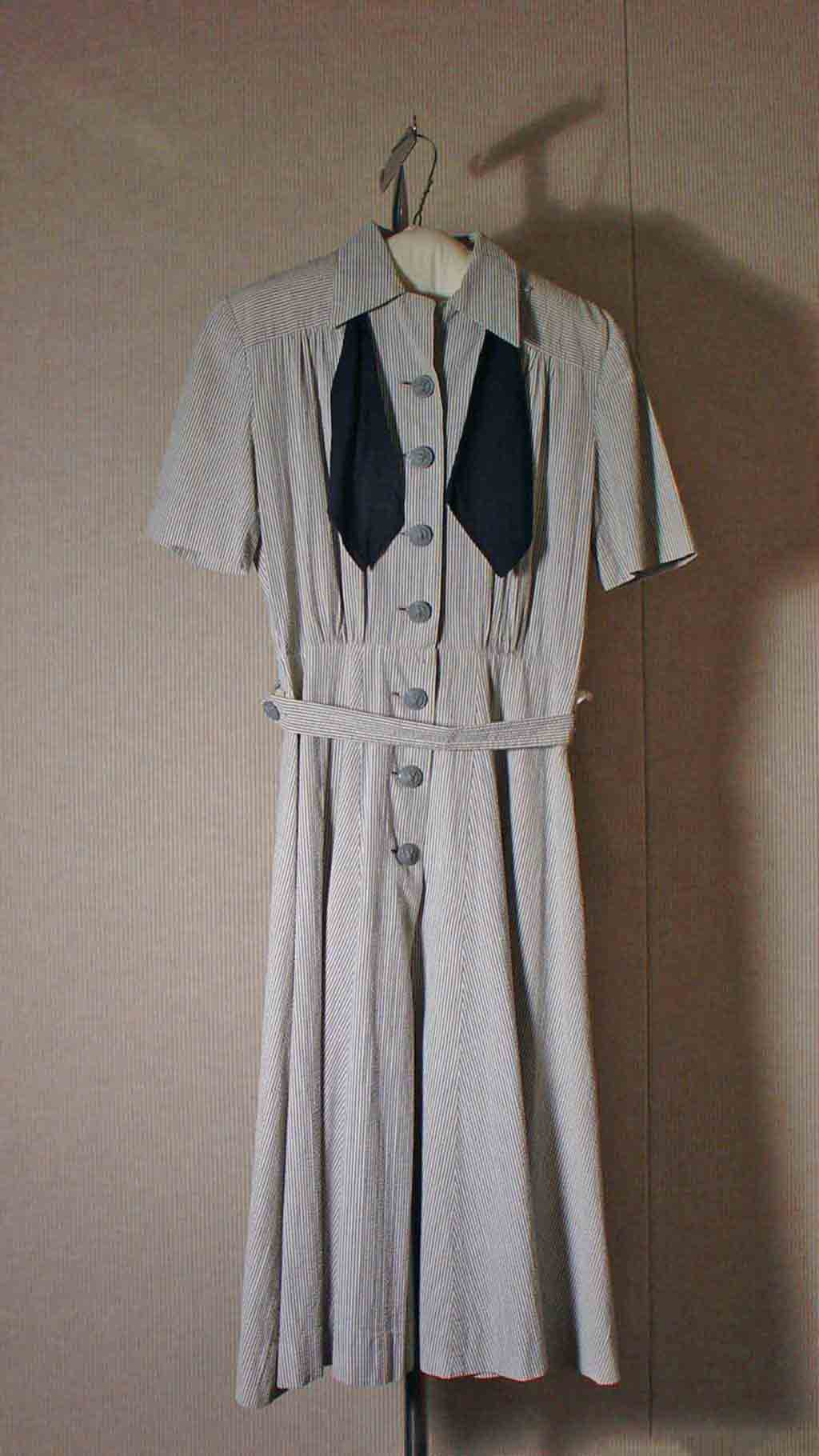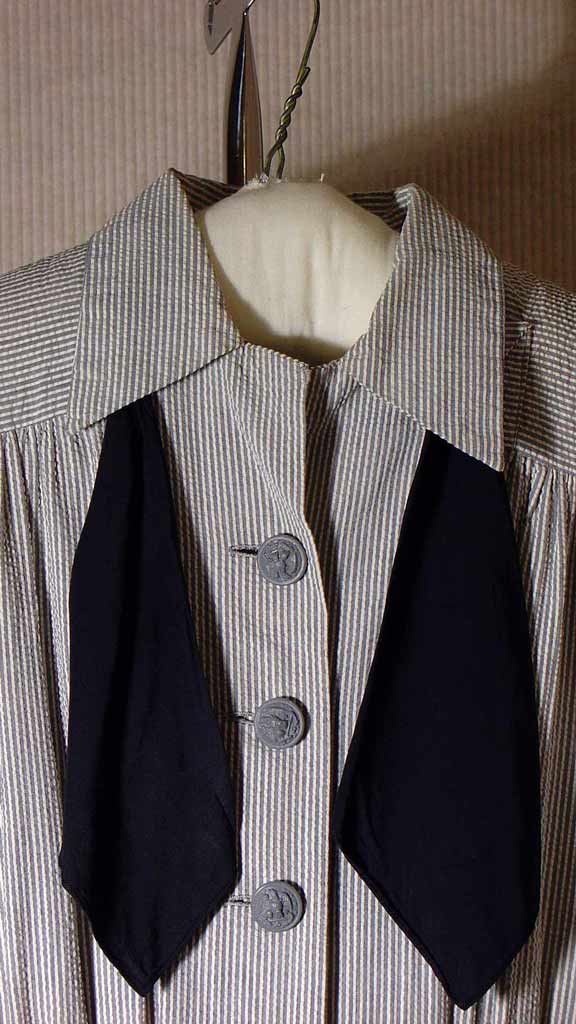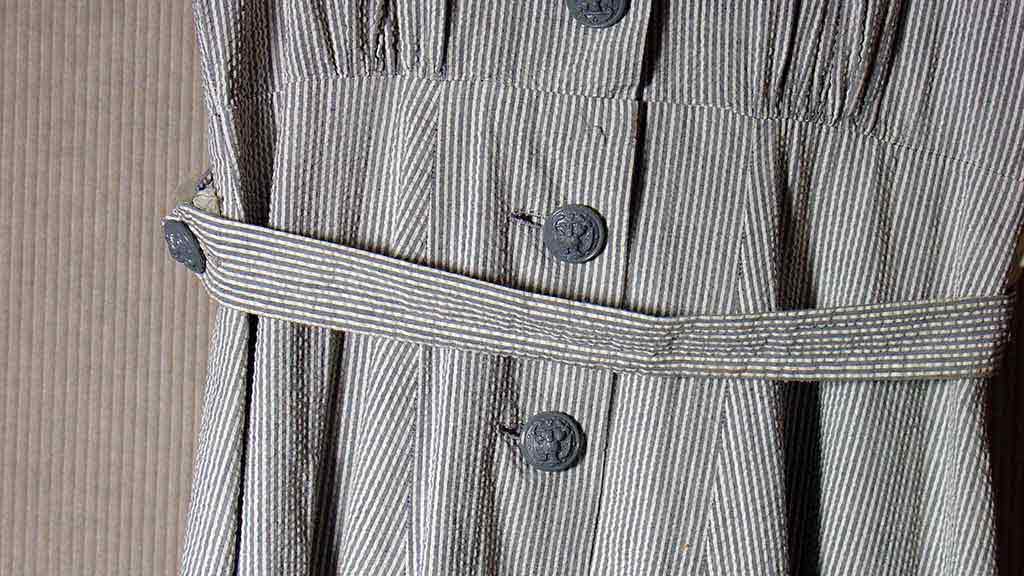
Featured Object: WAVES Uniform Dress, Tie and Belt
- Post Date: 2/5/2018
- Author: Becky Gates
- Reading Time: 2 minute read
The Women Accepted for Voluntary Emergency Service, known as WAVES, wore this seersucker shirtdress uniform for everyday service during World War II.
WAVES was a branch of the U.S. Navy that consisted entirely of women and was commanded by the first commissioned female officers. It was created in 1942, when President Roosevelt signed a law creating a role for women in the Navy. Women were a significant part of the armed forces in WWI, but between WWI and WWII, Navy regulations only allowed men to enlist. The legislation creating WAVES was controversial. There was resistance from conservative officers who did not believe that women belonged in the armed forces. Even the word “emergency” in the title suggested that women’s presence in the armed forces was only temporary.
The WAVES uniform was designed by the influential American couturier Mainbocher at the request of the wife of the Assistant Secretary of the Navy. Mainbocher was known for the simple elegance and exclusivity of his designs. He is also famous for creating the first strapless evening gown. There were four standard styles of uniform: summer dress whites, summer grays (like this one), working blues, and dress blues. WAVES were required to have hair that was above the shoulders, but they were encouraged to wear feminine haircuts, gloves, and skirts.
WAVES typically did clerical work like storekeeping and stenography, but they were also air traffic controllers, mechanics, truck drivers, and medical professionals. By the end of WWII, there were more than 75,000 enlisted WAVES and 8,000 female officers. Women gained the right to regular, permanent status in the armed forces in 1948 when President Truman signed the Women’s Armed Services Integration Act. The WAVES died out as an official organization, but the name was used into the 1970s.
The article was originally published on 9/8/2008, but is republished here with expanded photography.
-
- Share:
- Subscribe to Newletter
- Giving


